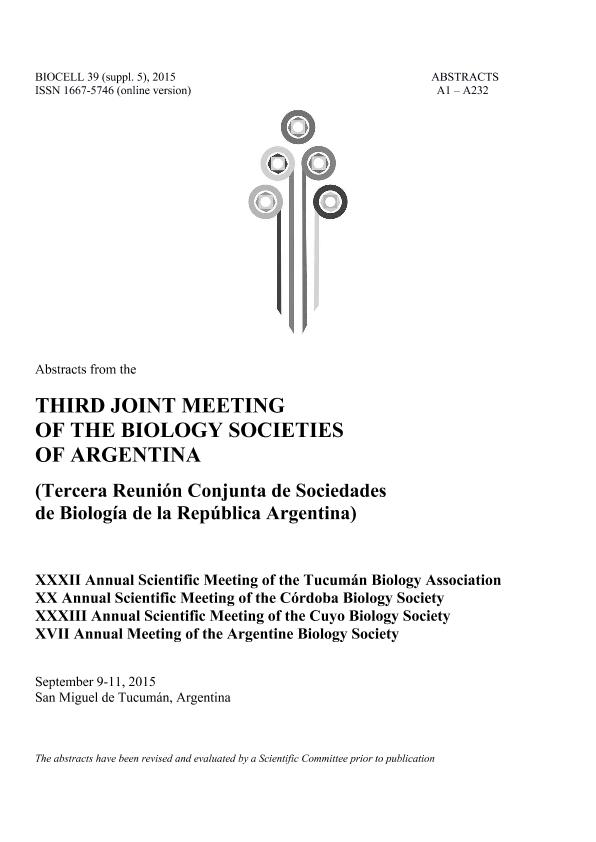Evento
Biocompatibility evaluation of Sclerotium rolfsii ATCC 201126 scleroglucan in subcutaneous tissue of rats
Tipo del evento:
Reunión
Nombre del evento:
XXXII Annual Scientific Meeting of the Tucumán Biology Association; XX Annual Scientific Meeting of the Córdoba Biology Society; XXXIII Annual Scientific Meeting of the Cuyo Biology Society and XVII Annual Meeting of the Argentine Biology Society
Fecha del evento:
09/09/2015
Institución Organizadora:
Sociedad Argentina de Biología;
Título de la revista:
Biocell
Editorial:
Tech Science Press
ISSN:
1667-5746
Idioma:
Español
Clasificación temática:
Resumen
Bone Tissue Engineering (BTE) combines three-dimensional scaffolds (3D), cells and signaling molecules to repair bone through mature engineered tissue. Our objective was to evaluate the in vivo biological response of a natural polymer scleroglucan called S. rolfsii ATCC 201126 implanted into rat subcutaneous tissues (ST) in order to consider its use combined with rhPTH scaffold for BTE. Polymer and zinc oxide eugenol pellets were implanted into the ST of 30 Wistar rats (150 ± 50 g). Animals were sacrificed at 7 and 30 days, and samples from implanted material and surrounded tissues were fixed in 10% buffered formalin. They were included in paraffin, serial cut and stained with H&E stain. At 7 days the polymer surrounded and colonized by polymorphonuclear neutrophils (PMNn) was observed. A lympho-mononuclear infiltrate was also found. At the interface between polymer and ST granulation tissue, many fibroblasts and new vessels, surrounded by fibrous tissue were observed. Zinc oxide eugenol presented fibrin leukocyte exudation and coagulation necrosis, surrounded by loose connective tissue. At 30 days the polymer was resorbed and replaced by fibrous connective tissue. However, zinc oxide eugenol was surrounded by dense fibrous connective tissue-like capsule. The results demonstrated that scleroglucan S. rolfsii ATCC 201126 was biocompatible and bioresorbable in rat ST, supporting its application as a scaffold in BTE. In addition, the natural origin of this polymer makes it compatible with the environment.
Palabras clave:
BIOCOMPATIBILITY
,
SCLEROGLUCAN
,
TISSUE ENGINEERING
,
RATS
Archivos asociados
Licencia
Identificadores
Colecciones
Eventos(PROIMI)
Eventos de PLANTA PILOTO DE PROC.IND.MICROBIOLOGICOS (I)
Eventos de PLANTA PILOTO DE PROC.IND.MICROBIOLOGICOS (I)
Citación
Biocompatibility evaluation of Sclerotium rolfsii ATCC 201126 scleroglucan in subcutaneous tissue of rats; XXXII Annual Scientific Meeting of the Tucumán Biology Association; XX Annual Scientific Meeting of the Córdoba Biology Society; XXXIII Annual Scientific Meeting of the Cuyo Biology Society and XVII Annual Meeting of the Argentine Biology Society; San Miguel de Tucumán; Argentina; 2015; 1-2
Compartir




